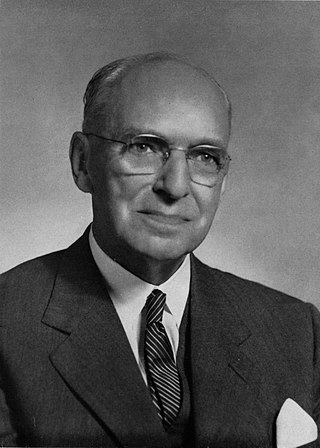Related Research Articles
The Primitive Methodist Church is a Methodist Christian denomination within the holiness movement. It began in England in the early 19th century, with the influence of American evangelist Lorenzo Dow (1777–1834).
Alfred Harold Wood OBE was a 20th-century Australian Christian minister, educator, writer, hymnologist and advocate of church union.
The Methodist New Connexion, also known as Kilhamite Methodism, was a Protestant nonconformist church. It was formed in 1797 by secession from the Wesleyan Methodists, and merged in 1907 with the Bible Christian Church and the United Methodist Free Churches to form the United Methodist Church. In Australia, it joined with those plus the Wesleyan Methodist Church and Primitive Methodist Church as the Methodist Church of Australasia in 1902.
The Methodist Church of Australasia was a Methodist denomination based in Australia.
William Henry Fitchett was an Australian journalist, minister, newspaper editor, educator and founding president of the Methodist Ladies' College, Melbourne.
Jabez Bunting Waterhouse was an English-born Australian Methodist minister and a leading legislator within Methodist conferences.

Carl Spencer Frederick Glasgow was an Australian Member of Parliament and lawyer.
Howard Henry Nolan was an Australian Methodist minister. From 1908 until 1911 he was Conference Secretary of Foreign Missions and in 1928 and 1929 was elected as Secretary of the New South Wales Conference of Methodist Church of Australasia.

Albert Street Uniting Church is a heritage-listed church at 319 Albert Street, Brisbane City, City of Brisbane, Queensland, Australia. It was designed by George Henry Male Addison and built from 1888 to 1889 by Thomas Pearson & Sons. It was originally known as Albert Street Methodist Church and Central Methodist Mission. It was added to the Queensland Heritage Register on 21 October 1992.
William Arthur Dunn was a prominent Methodist clergyman in the colony and State of South Australia. He was president of the Methodist Conference in 1929 and president of Prince Alfred College 1930.
Charles Thomas Newman, generally known as Rev. C. T. Newman, was a Methodist minister in South Australia and New South Wales.
John Henry Kessell was a member of the Queensland Legislative Assembly.

Robert Henry Nesbitt (1883–1966) was the first Australian Trade Commissioner to New Zealand and became chairman of the NSW Milk Board. During World War II he was the business member of the Air Board. He had extensive experience in the insurance industry and as a company secretary and accountant. Nesbit was an influential Methodist in New South Wales. He served as the Chairman of the Executive Committee of the Council of Newington College for two decades.

Cecil Frank Gribble was an Australian Christian minister who was President General of the General Conference of the Methodist Church of Australasia 1964–1966.

Thomas Pollard Sampson was a Tasmanian-born Australian architect active in New South Wales during the first forty years of the 20th century. His work encompassed the styles of the Federation Arts and Crafts and Bungalow through to the Inter-War Styles. In 1912 he designed an octagonal roofed stadium at Rushcutters Bay that seated up to 12,000 spectators. At the time, the Sydney Stadium was said to be "the largest roofed-in structure in the world." In the 1920s and 1930s, as a golfer and member of Concord Golf Club and Pennant Hills Golf Club, he designed the clubhouses at both courses. The buildings of both these well known Sydney clubs are still in use in 2023.
Rupert Howard Grove was an Australian solicitor and a prominent Methodist and Uniting Church layman. The Australian Dictionary of Biography states that, "in the progression towards the union of the Congregational, Methodist and Presbyterian churches in Australia, Grove made a decisive impact."
The Australian Christian Commonwealth was a weekly newspaper published by Hussey & Gillingham in South Australia from 1901 to 1940.
Thomas Edward Clouston was an Irish-born Presbyterian minister and academic in New South Wales.

Henry Youngman (1848–1927) was a Methodist minister. He was President-General of the Methodist Church of Australasia and often described as the Father of Methodism in Queensland.
Rev. William Henry Savigny MA was an Australian academic, born in England. His elder son, also named William Henry Savigny was a longtime master at Sydney Grammar School.
References
- ↑ Gunson, Niel, "Wheen, John Gladwell (1858–1929)", Australian Dictionary of Biography, Canberra: National Centre of Biography, Australian National University, retrieved 22 April 2021
- 1 2 3 4 5 6 7 8 9 10 "PERSONAL". The Examiner (Tasmania) . Vol. LXXXVII, no. 269. Tasmania, Australia. 14 November 1929. p. 8 (DAILY). Retrieved 22 April 2021– via National Library of Australia.
- ↑ "NOTED METHODIST". Chronicle . Vol. LXXII, no. 3, 818. South Australia. 21 November 1929. p. 64. Retrieved 22 April 2021– via National Library of Australia.
- ↑ "THE PRESIDENT OF THE CONFERENCE". The Methodist . Vol. XXVIII, no. 13. New South Wales, Australia. 29 March 1919. p. 7. Retrieved 22 April 2021– via National Library of Australia.
- ↑ "REV. JOHN G. WHEEN. Death Announced". The Sydney Morning Herald . No. 28, 662. New South Wales, Australia. 14 November 1929. p. 12. Retrieved 22 April 2021– via National Library of Australia.
- ↑ "Family Notices". The Sydney Morning Herald . No. 28, 662. New South Wales, Australia. 14 November 1929. p. 9. Retrieved 22 April 2021– via National Library of Australia.
- ↑ "Memorial Window to Rev. J. G. Wheen". The Methodist . Vol. 45, no. 34. New South Wales, Australia. 22 August 1936. p. 6. Retrieved 22 April 2021– via National Library of Australia.